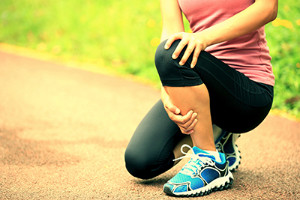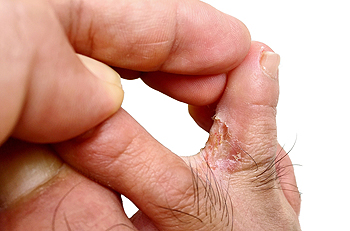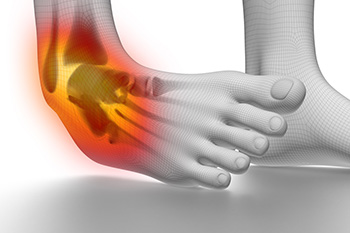Blog
Items filtered by date: October 2025
What Can I Do to Prevent Running Injuries?
 Running is a well-known sport that is loved by many people. However, without the proper knowledge of technique and equipment, many people can suffer running injuries. To avoid these types of injuries, it’s beneficial to gain knowledge on specific prevention tips you can practice while performing the sport. Strengthening your body is an important step in this process. Activation exercises can be useful to look into and perform before you go on a run, that way your body is prepared for physical activity. Increasing the intensity of your runs must be done gradually or your body will react negatively. Another factor in injury prevention is proper footwear. Your shoes should fit comfortably and also offer the necessary support features for the type of running you enjoy. For more information on how to prevent running injuries, please consult with a podiatrist for professional advice and care.
Running is a well-known sport that is loved by many people. However, without the proper knowledge of technique and equipment, many people can suffer running injuries. To avoid these types of injuries, it’s beneficial to gain knowledge on specific prevention tips you can practice while performing the sport. Strengthening your body is an important step in this process. Activation exercises can be useful to look into and perform before you go on a run, that way your body is prepared for physical activity. Increasing the intensity of your runs must be done gradually or your body will react negatively. Another factor in injury prevention is proper footwear. Your shoes should fit comfortably and also offer the necessary support features for the type of running you enjoy. For more information on how to prevent running injuries, please consult with a podiatrist for professional advice and care.
Exercising your feet regularly with the proper foot wear is a great way to prevent injuries. If you have any concerns about your feet, contact Akena Wannamaker, DPM of ASW Foot and Ankle. Our doctor will treat your foot and ankle needs.
How to Prevent Running Injuries
Many common running injuries are caused by overuse and overtraining. When the back of the kneecap starts wearing out and starts causing pain in your knee, this is commonly referred to as runner’s knee. Runner’s knee is a decrease in strength in your quadriceps and can occur if you’re not wearing properly fitted or supporting shoes. To prevent runner’s knee, focusing on hip strengthening is a good idea, as well as strengthening your quads to keep the kneecaps aligned.
What Are Some Causes of Running Injuries?
- One cause of a common running injury is called iliotibial band syndrome.
- Plantar fasciitis is also another common injury.
- Stress fractures can occur from overtraining, lack of calcium, or even your running style.
Best Ways to Prevent Running Injuries
- Wear footwear that fits properly and suits your running needs.
- Running shoes are the only protective gear that runners have to safeguard them from injury.
- Make a training schedule. Adding strengthening exercises as well as regular stretching can help keep you strong and limber and can lessen the possibility of injuries.
- Stretching keeps muscles limber; this will help you gain better flexibility.
If you have any questions, please feel free to contact our office located in Richmond, VA . We offer the newest diagnostic and treatment technologies for all your foot care needs.
Contagious Toenail Fungus

Toenail fungus can cause the toenails to become brittle and yellow. They can gradually harden and become thicker, causing difficulty in having them properly trimmed. This unsightly foot condition is caused by a fungal infection, and is considered to be contagious. This type of fungus lives and thrives in warm and moist environments, consisting of shower room floors, public swimming pools, and similar areas. The fungus can enter the body through tiny cracks in the skin, and it is beneficial to wear appropriate shoes while in these types of areas. A diagnosis is performed by extracting a small sample of the nail. After confirmation is received, treatment can begin. There are various methods that can accomplish this, and it is strongly suggested a podiatrist is contacted as quickly as possible who can prescribe proper medication.
For more information about treatment, contact Akena Wannamaker, DPM of ASW Foot and Ankle. Our doctor can provide the care you need to keep you pain-free and on your feet.
Toenail Fungus Treatment
Toenail fungus is a condition that affects many people and can be especially hard to get rid of. Fortunately, there are several methods to go about treating and avoiding it.
Antifungals & Deterrence
Oral antifungal medicine has been shown to be effective in many cases. It is important to consult with a podiatrist to determine the proper regiment for you, or potentially explore other options.
Applying foot powder on the feet and shoes helps keep the feet free of moisture and sweat.
Sandals or open toed shoes – Wearing these will allow air movement and help keep feet dry. They also expose your feet to light, which fungus cannot tolerate. Socks with moisture wicking material also help as well.
If you have any questions please contact our office located in Richmond, VA . We offer the newest diagnostic and treatment technologies for all your foot and ankle needs.
Understanding Athlete’s Foot and How to Treat It

Athlete’s foot is a common fungal infection that affects the skin on the feet, often appearing between the toes. It can cause itching, redness, peeling, and cracking, which may lead to discomfort and spreading if untreated. The fungus thrives in warm, moist environments such as locker rooms and swimming pools. Risk factors include wearing tight shoes, having sweaty feet, or walking barefoot in public places. A podiatrist can provide an accurate diagnosis, and recommend preventive measures to stop recurrence. If you have signs of athlete’s foot, it is suggested that you consult a podiatrist who can provide effective treatment solutions, which often includes prescribed medication.
Athlete’s Foot
Athlete’s foot is often an uncomfortable condition to experience. Thankfully, podiatrists specialize in treating athlete’s foot and offer the best treatment options. If you have any questions about athlete’s foot, consult with Akena Wannamaker, DPM from ASW Foot and Ankle. Our doctor will assess your condition and provide you with quality treatment.
What Is Athlete’s Foot?
Tinea pedis, more commonly known as athlete’s foot, is a non-serious and common fungal infection of the foot. Athlete’s foot is contagious and can be contracted by touching someone who has it or infected surfaces. The most common places contaminated by it are public showers, locker rooms, and swimming pools. Once contracted, it grows on feet that are left inside moist, dark, and warm shoes and socks.
Prevention
The most effective ways to prevent athlete’s foot include:
- Thoroughly washing and drying feet
- Avoid going barefoot in locker rooms and public showers
- Using shower shoes in public showers
- Wearing socks that allow the feet to breathe
- Changing socks and shoes frequently if you sweat a lot
Symptoms
Athlete’s foot initially occurs as a rash between the toes. However, if left undiagnosed, it can spread to the sides and bottom of the feet, toenails, and if touched by hand, the hands themselves. Symptoms include:
- Redness
- Burning
- Itching
- Scaly and peeling skin
Diagnosis and Treatment
Diagnosis is quick and easy. Skin samples will be taken and either viewed under a microscope or sent to a lab for testing. Sometimes, a podiatrist can diagnose it based on simply looking at it. Once confirmed, treatment options include oral and topical antifungal medications.
If you have any questions, please feel free to contact our office located in Richmond, VA . We offer the newest diagnostic and treatment technologies for all your foot care needs.
Symptoms of a Sprained Ankle

A sprained ankle occurs when the ligaments that support the joint are stretched or torn, often after rolling or twisting the foot. This injury is common during sports, running on uneven ground, or even simple daily activities like stepping off a curb. Symptoms usually begin with sudden pain around the ankle, which may be followed by swelling, bruising, and in more severe cases, difficulty placing weight on the foot. Instability can also develop, making it feel like the ankle might give way when standing or walking. Most ankle sprains affect the outer side of the ankle, though the inner side or the area just above the joint can be involved as well. A podiatrist can examine the ankle, order imaging if needed, and recommend the right treatment plan to restore stability and function. If you have symptoms of a sprained ankle, it is suggested that you make an appointment with a podiatrist for an exam, diagnosis, and treatment, which may include immobilization.
Ankle sprains are common but need immediate attention. If you need your feet checked, contact Akena Wannamaker, DPM from ASW Foot and Ankle. Our doctor can provide the care you need to keep you pain-free and on your feet.
How Does an Ankle Sprain Occur?
Ankle sprains take place when the ligaments in your ankle are torn or stretched beyond their limits. There are multiple ways that the ankle can become injured, including twisting or rolling over onto your ankle, putting undue stress on it, or causing trauma to the ankle itself.
What Are the Symptoms?
- Mild to moderate bruising
- Limited mobility
- Swelling
- Discoloration of the skin (depending on severity)
Preventing a Sprain
- Wearing appropriate shoes for the occasion
- Stretching before exercises and sports
- Knowing your limits
Treatment of a Sprain
Treatment of a sprain depends on the severity. Many times, people are told to rest and remain off their feet completely, while others are given an air cast. If the sprain is very severe, surgery may be required.
If you have suffered an ankle sprain previously, you may want to consider additional support such as a brace and regular exercises to strengthen the ankle.
If you have any questions please feel free to contact our office located in Richmond, VA . We offer the newest diagnostic tools and technology to treat your foot and ankle needs.
